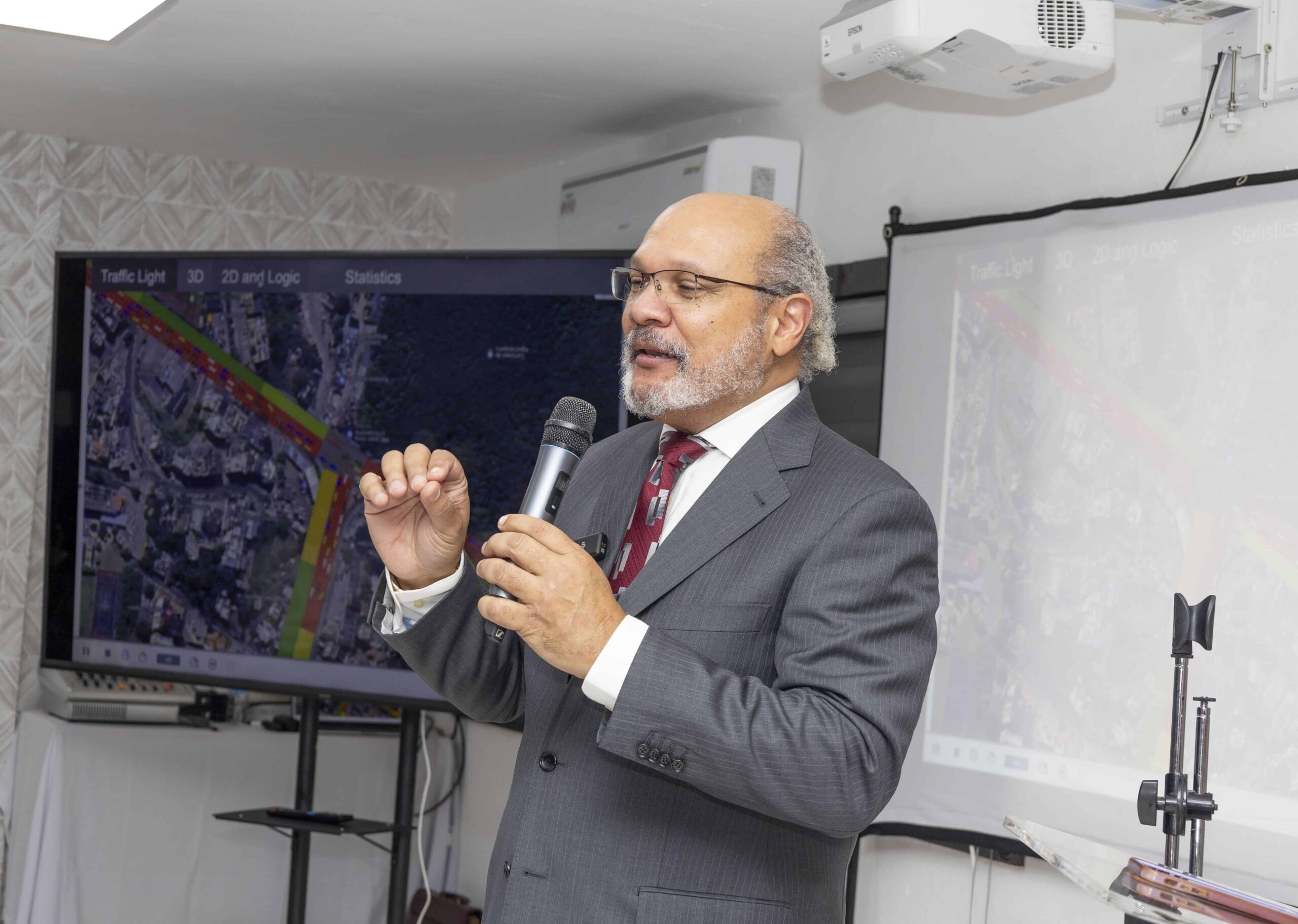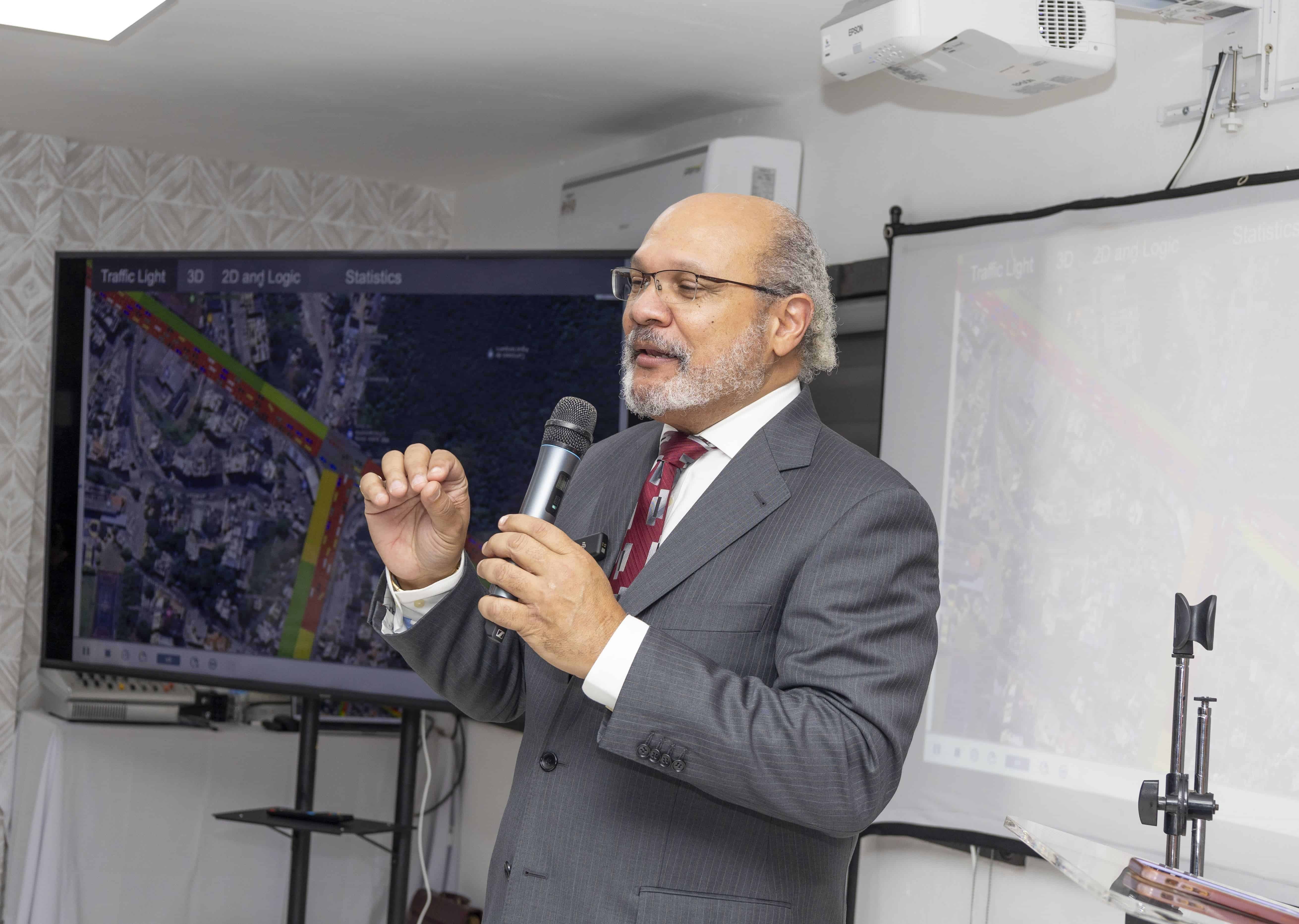
The Association National Business and Industries Herrera (ANEIH) proposed changing the traditional way of managing roads in Santo Domingo with the implementation of cutting-edge solutions based on Yointelligence toartificial (IA).
Euri Andújar, president of ANEIH, highlighted that the studies carried out have shown that traffic management systems based in AI can reduce delays up to 25% or more, significantly improving Travel times to work centres and relieving road congestion.
Walker Sterling, President of Quantum TC Consultingspoke about global technological solutions and the challenges of the sector within the framework of the Economic Cocktail organized by the Industriales de Herrera on Thursday, and which addressed the topic “Management of the Traffic: “ANEIH AI technical proposal”.
Sterlin presented the solution suggested by ANEIH after having studied the behavior of one of the most congested areas of Santo Domingo, which includes the avenues Republic of ColombiaMonumental and President Avenue Jacob Majluta Random.

Technology options with AI
Among the technological options based on Intelligence Artificial Highlights of the panel include:
- Traffic lights Smart: This device, more advanced than cameras, works as a substitute for traffic officers. It has the ability to adjust the duration of the lights according to the behavior of road traffic.
- VICS (Vehicle Information and Communication System): This system increases road safety by allowing traffic lights to detect ambulances, fire trucks, etc., and change the light cycle in favor of the emergency.
- V2X (Vehicle-to-Anything): Known as the Internet of Vehicles, this technology enables communication between vehicles. Devices installed in vehicles allow drivers to receive messages about what is happening on the road ahead, such as the presence of a truck blocking the way or a pedestrian crossing the street.
- Simulation Computerized traffic: visual models that help in the management and optimization of traffic, based on vehicle load.
Mobility intelligent
The proposal is based on three axes:
- Create Intelligence: implementation of traffic lights that study and store traffic patterns for self-management and adaptation to traffic flow.
- Create Communication: program smart traffic lights to communicate with each other, adjusting the environment and ensuring greater mobility.
- Create Governance: Establish a control center with digital simulation capabilities to create optimized scenarios and modify stored patterns as needed.
Implementation time
According to Sterlin, implementing the model proposed by ANEIH may take a minimum of 15 months. The process includes four main components: traffic analysis in critical areas (approximately three months), use of traffic simulators (also three months), installation of cameras, sensors and control algorithms (six months) and final integration and supervision (another three months).
“The Republic Dominican has more than five million vehicles, of which more than 30% are in Santo Domingo. This situation is serious“since traffic jams cause daily losses of more than 50 million pesos to the economy,” said Andújar.
ANEIH reported that it will present a formal proposal for a technological project aimed at solving the city’s critical congestion points where to develop road constructions result almost impossible, such as Abraham Lincoln Avenue, due to the high cost of acquisition and demolition of existing structures.



